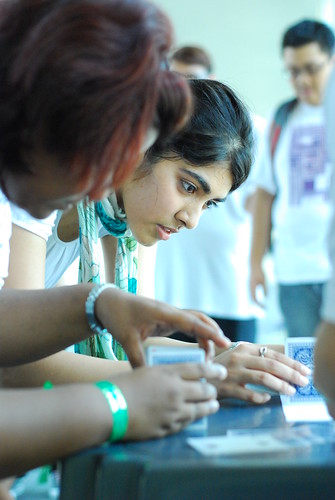 Late last term, I designed and delivered a workshop with my CTE colleague Julie Timmermans regarding peer review of teaching (PRT). Julie and I have been guiding a learning community (LC) on PRT for the past year and a half with departmental administrators. One key question that has continued to plague our group is: how do you define “effective teaching” in your context? This would seem to be a straightforward question, and yet it’s not. It’s also a very critical question as departments consider what criteria they will use to provide feedback on and/or assess teaching. One way to approach the question that the LC group asked us to explore involved identifying key principles of learning and how they might intersect with and inform PRT practices.
Late last term, I designed and delivered a workshop with my CTE colleague Julie Timmermans regarding peer review of teaching (PRT). Julie and I have been guiding a learning community (LC) on PRT for the past year and a half with departmental administrators. One key question that has continued to plague our group is: how do you define “effective teaching” in your context? This would seem to be a straightforward question, and yet it’s not. It’s also a very critical question as departments consider what criteria they will use to provide feedback on and/or assess teaching. One way to approach the question that the LC group asked us to explore involved identifying key principles of learning and how they might intersect with and inform PRT practices.
It was a challenge to organize the results from multiple decades of research on human learning, and yet we knew this task was important to help inform the work of the group. In the end, we categorized the main principles into three dimensions:
- Cognitive
- Motivational
- Social
The cognitive dimension includes theories about students’ prior knowledge – the need to link new learning to existing knowledge and find ways to identify and address misconceptions. It also includes theory regarding the differences between novice and expert learners, particularly how they organize information. Cognitive theories also focus on the necessity for students to acquire, practice, and apply learning (knowledge and skills) and the value of metacognition.
Motivation, in the context of learning, “influences the direction, intensity, persistence, and quality of the learning behaviors in which students engage” (Ambrose et al., 2010, p.69). Expectancy-value theory from motivation identifies learning as goal-oriented behavior that is influenced by the value of the goal for students and the expectancy of success. Finally, theories within the social dimension indicate that learning involves building knowledge by interacting with others – both teachers and peers – and benefits from positive, encouraging environments.
The workshop participants worked together to identify specific instructional strategies that could be used to implement these theoretical principles of learning as well as evidence that could be collected for PRT purposes. PRT practices often include a classroom observation component in which behaviours such as organization of material or ways to engage students in class are assessed. But one “a-ha moment” from this activity was that observing classroom instructional behaviours won’t provide a holistic picture of the effectiveness of an instructor’s teaching: teaching also involves course design decisions. For example, social learning may be assessed in class if small groups are used, but social learning may be implemented via group assignments outside of class. Reviewing the course materials related to that assignment would be the only feasible source of evidence about this form of learning. Similarly, reviewing the learning assessments used in a course would provide insights into whether students may perceive they could succeed. And reviewing the results of the students’ learning would provide information about the outcomes achieved as a result of the course delivery and design, in addition to students’ attributes and behaviours as learners.
Recognizing the role of course design fits clearly with the advice we provide in CTE about the amount of time a student should spend on a course: 3 hours in class and 5 to 7 outside of class. This out-of-class time typically involves student work that is directed by an instructor’s course design (e.g., assignments, readings).
This session left me with one key takeaway:
- To truly review our peers’ teaching, we need to focus on more than what happens in classrooms – course design materials are critical sources of evidence of effective teaching as well.
If you or one of your colleagues wants to explore more about course design, the Teaching Excellence Academy may be a great next step. Contact your department Chair or School Director in mid-February to discuss being nominated. Let me know if you have any questions about this multi-day workshop or about the peer review of teaching.
Reference:
Ambrose, S.A., Bridges, M.W., DiPietro, M., Lovett, M.C., Norman, M.K. (2010). How learning works: Seven research-based principles for smart teaching. San Francisco, CA: Jossey-Bass.


 Over the last few months, I have been working on a multi-institutional project on identifying indicators of an institutional culture that fosters “quality teaching”. One report that our group has been reviewing comes from the Organisation for Economic Cooperation and Development’s Institutional Management in Higher Education group. Published in 2012, the report entitled
Over the last few months, I have been working on a multi-institutional project on identifying indicators of an institutional culture that fosters “quality teaching”. One report that our group has been reviewing comes from the Organisation for Economic Cooperation and Development’s Institutional Management in Higher Education group. Published in 2012, the report entitled 
